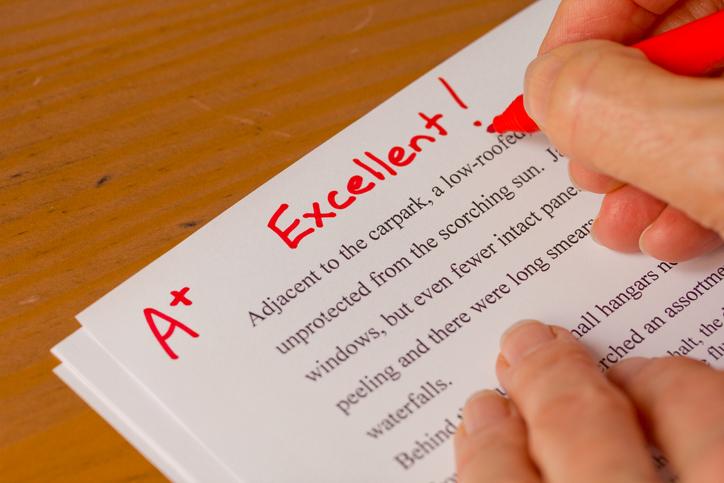
Top tips on providing useful feedback to students

Feedback can do a great deal of heavy lifting if applied well by instructors. It can provide students with a means to correct mistakes they made in exams and evaluations, improve their comprehension of a topic and help them apply learned concepts to problem-solving in an effective and efficient manner. Our inputs can also be extremely useful in motivating them to engage better in the course and to be more mindful in their approach to education in general.
In evaluations and exams, we look to gauge student learning in a detailed manner and typically relay feedback (as grades, marks and/or notes) to help increase traction on learning objectives. In class tutorial sessions, if we walk around and talk to students and channel their ideas and thoughts, we can provide direct verbal feedback that helps improve problem-solving skills. This may be especially important for undergraduates. However, while such interactions may have significant benefit to students, they consume a lot of faculty time.
- A checklist for inclusive assessment and feedback, in a post-ChatGPT world
- Why students are best placed to help students understand feedback
- Writing exam questions in a six-step process
The time investment (over and above preparation for and conducting of classes and exams/evaluations) notwithstanding, here are a few things you could keep in mind in terms of feedback to help you engage with students better, feel productive yourself and, ultimately, improve the quality of your course.
Design questions and activities so as to facilitate providing feedback
One trick you could use, particularly early in the semester, is to divide a bigger problem into smaller parts and then number each of those parts. Students then typically write their answers in the question paper itself, next to or below the question, in boxes. A quick glance at the answers is enough to be able to provide feedback. The focus in evaluations and exams should be helping students to understand concepts in greater depth, with the marks/grades being an outcome of this. It’s a simple redesign that goes a long way, even in traditional pen-and-paper exams.
Use game-based learning and online tools
Online tools, including games, can help provide specific, customised feedback that is accessible individually to students. This is also generally far less stressful for them to deal with and takes less time investment from instructors. Many platforms, such as Quizzizz or Kahoot!, have cute graphics and background music to mitigate the natural distress students are likely to feel if they answer a question or two incorrectly.
Instructors can provide short bits of feedback that are displayed to students when they set up Quizzizz or Kahoot!, or we can include a “report card” to be given to students at the end of the game, showing them the correct answer, their answer and some tips. The “fail safely” aspect of games combined with the possibility of immediate and specific feedback makes this proposition very attractive all around.
Discuss generic tips in class
For every tutorial/exam, as you grade, it helps if you jot down points that are routinely missed by students. These can then be highlighted to the class as potential pitfalls they should anticipate and try to avoid in future. As an example, some of the things we find ourselves frequently putting on this list in engineering classes are – using consistent units, identifying significant digits, re-checking answers for consistency, stating assumptions and sources of data, and so on. Such “class-wide” feedback can certainly help students in the long run.
Show appreciation for effort
Stories of Albert Einstein’s rejected paper or Thomas Edison failing in school and getting harsh reports don’t help learners feel better when they do badly on their exams. When students have clearly expended a lot of time and effort, even if the approach or final answer is incorrect (or at least not what you are looking for), it is important to acknowledge that effort. Awarding marks for effort can be useful but, if not, at the very least show appreciation for their efforts verbally.
Be nice!
Even the most entitled and annoying students deserve our empathy and equanimity. College and graduate school are stressful enough without having to deal with overly harsh commentary – from anyone. In your feedback, stick to facts, acknowledge their effort, be generally encouraging – more often than not, students get the message (which should be that we are invested in their success and want to help them improve). After all, the mark you award sends its own message to them, and your words are just gravy on top.
Feedback from a professor is a critical part of the teaching and learning ecosystem. On the one hand, it is our opportunity to help shape students’ thinking in the right direction; on the other, it is a chance for students to figure out lacuna in their comprehension of concepts and overall preparation. It takes time and effort, but pitching it right can go a long way in improving student engagement.
Preeti Aghalayam is professor in chemical engineering at IIT Madras in India.
If you found this interesting and want advice and insight from academics and university staff delivered direct to your inbox each week, sign up for the Campus newsletter.


